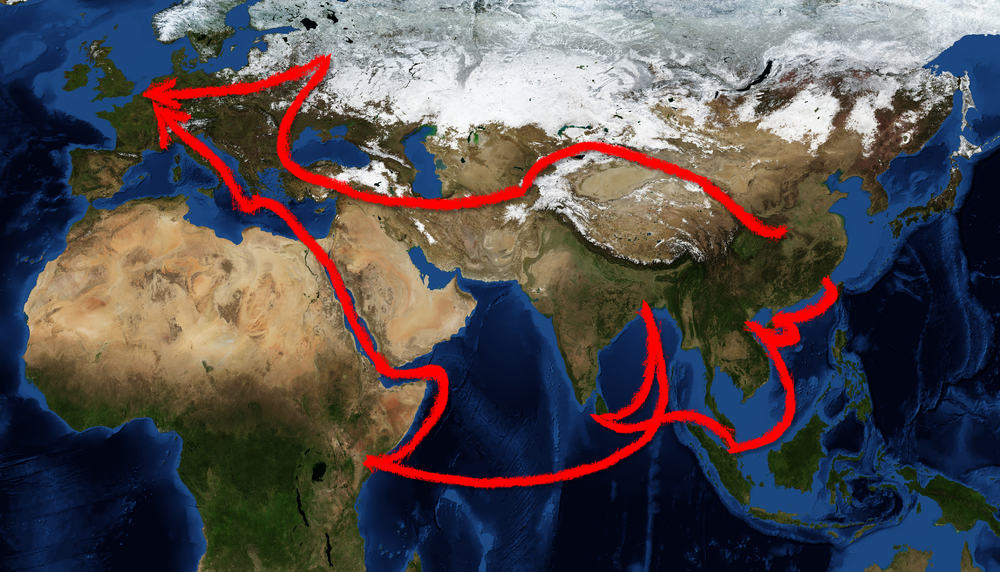More than 2,000 years ago, the ancient Silk Road was a major trade link between the East and West. The Silk Road was an ancient trade route that linked the Western world with the Middle East and Asia.
However, technological change and dramatic declines in transportation costs have since made it obsolete as container shipping and the advent of cargo flights have shifted trade from the surface to the sea or air. Nevertheless, China has a new initiative, The Belt and Road Initiative, that aims at establishing new connections between Europe and Asia, which are bypassing more modern transport routes in favor of railway connections.

The Belt and Road Initiative consists of six economic corridors:
1. China-Mongolia-Russia
2. Eurasian Land Bridge
3. China to Central Asia and Western Asia
4. China-Indochina peninsula
5. China-Pakistan
6. Bangladesh-China-India-Myanmar
What are China’s objectives from The Belt and Road Initiative?
- China wants to develop international clout by expanding its influence. It feels isolated as it is not a part of G7 countries. Hence, the Initiative will enable China to exert greater regional influence.
- The GDP of China has slowed down in recent years. China expects the Initiative to boost its GDP by boosting trade. China will find new markets for its product.
- The Chinese model of growth had been investment-led. It has led to excess capacity. This excess capacity will be channelized effectively if China ventures into newer markets for its export.
- It will boost Yuan’s usage amongst the countries and strengthen the role of Yuan as an international reserve currency.
- It will fix regional disparities in China. The Eastern and Southern regions of China have lagged behind in terms of growth. These regions will be now better connected to the world.
What are the challenges faced by China?
- Some of the countries involved have a very low sovereign credit rating. These countries with low credit-worthiness might not be able to service their debt. This would affect China financially.
- Countries in the Middle East are unstable and possess a risk to the Initiative.
- There might be a political backlash in poor countries if they feel they are being exploited by China. This backlash has already occurred in countries like Sri Lanka and Myanmar and in Africa, when they could not service their debt. The investment made by China in these countries did not generate enough profits. Hence, there might be a problem of poor countries left laden with massive debt.
What are the benefits for the other countries involved?
- It could bridge the infrastructural deficit in developing countries like Afghanistan and Pakistan.
- These countries could see a boost in their GDP with increased investment and increased trade.
But, we should not be too optimistic about the success of The Belt and Road Initiative as Chinese investments have led to political backlashes in the past. Charges of environmental degradation and labour exploitation were leveled against them. Also, the loans might be cheap but they come with riders. The countries have to source material from China which results in an increase in the cost of borrowing.




